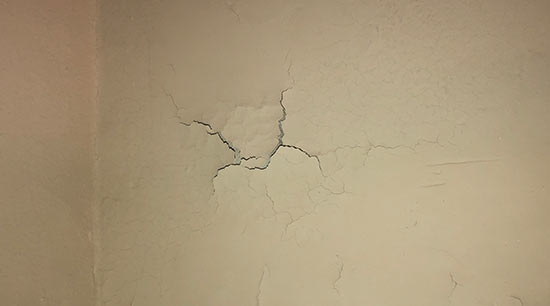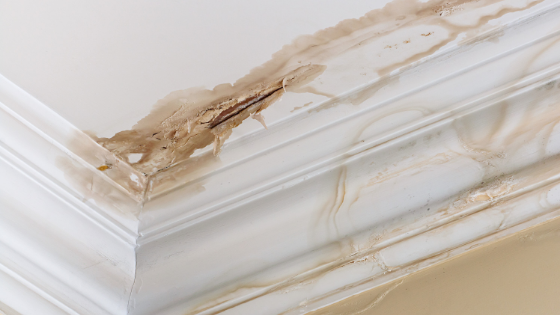Identifying Water Stains on Walls - Guidelines to Assess and Address Them
Identifying Water Stains on Walls - Guidelines to Assess and Address Them
Blog Article
Almost everyone has their own unique way of thinking on the subject of Indicators of Water Damage Behind Walls.

Water stains on wall surfaces are not positive to the eyes. Your residence must lack stains on the walls, roofing system, or floorings. That is the suitable state of a house and its frameworks. Occasionally it appears practically inevitable to experience water discolorations on walls in homes.
Homeowners residing in moist regions regularly take care of the anxiety of water stains on wall surfaces. Yet that doesn't have to hold true for you. With exact and all-around info on the root causes of water discolorations and also prompt repair processes, you will always be a step ahead of such occurrences. This short article promises to be a handy guide for you.
3 Typical Reasons For Water Discolorations on Walls
In contrast to popular belief, water spots on wall surfaces do not always come from poor structure products. There are several root causes of water discolorations on walls. These include:
Poor Water drainage
This will prevent water from leaking into the walls. This links to extreme dampness that you discover on the walls of your building.
So, the leading cause of damp wall surfaces, in this case, can be an inadequate drain system. It can likewise be due to bad management of sewage pipelines that run through the structure.
Damp
When hot wet air meets with completely dry cold air, it creates water droplets to base on the wall surfaces of buildings. When there is steam from cooking or showers, this happens in cooking areas and washrooms. The water droplets can stain the surrounding walls in these parts of your home as well as spread to other locations.
Wet or condensation impacts the roofing system and wall surfaces of structures. When the wall is wet, it develops a suitable setting for the development of microbes and also fungis.
Pipe Leaks
Many residences have a network of water pipes within the walls. It always boosts the feasibility of such pipelines, as there is little oxygen within the wall surfaces.
A drawback to this is that water leak influences the walls of the building and causes prevalent damages. An indication of damaged pipelines is the appearance of a water stain on the wall surface.
Water Spots on Wall: Repair Work Tips
House owners would normally want a quick fix when handling water stains. Yet, they would certainly quickly realize this is disadvantageous as the water spots recur. Here are a couple of useful tips that will lead you in the repair work of water discolorations on wall surfaces:
Pro Pointer
A houseplant in your house additionally boosts its humidity. So, if your home is already moist, you might wish to introduce houseplants with marginal transpiration. An example of appropriate houseplants is succulents.
Conclusion
No one desires to have water stains on wall surfaces in their residence, it can occur to the best of us. This article provides you utilize, as you currently understand how to manage this problem if it does take place.
It is constantly best to recruit professional services to help repair the damages in your home.
Often it appears nearly unpreventable to experience water stains on wall surfaces in residences.
In contrast to prominent belief, water stains on wall surfaces do not constantly stem from bad structure materials. There are several reasons of water spots on walls. The water beads can discolor the surrounding walls in these components of your house and also spread to various other locations.
Below are a couple of practical suggestions that will guide you in the repair of water discolorations on walls:
How to Remove Water Stains From Your Walls Without Repainting
The easy way to get water stains off walls
Water stains aren’t going to appear on tile; they need a more absorbent surface, which is why they show up on bare walls. Since your walls are probably painted, this presents a problem: How can you wash a wall without damaging it and risk needing to repait the entire room?
According to Igloo Surfaces, you should start gently and only increase the intensity of your cleaning methods if basic remedies don’t get the job done. Start with a simple solution of dish soap and warm water, at a ratio of about one to two. Use a cloth dipped in the mixture to apply the soapy water to your stain. Gently rub it in from the top down, then rinse with plain water and dry thoroughly with a hair dryer on a cool setting.
If that doesn’t work, fill a spray bottle with a mixture of vinegar, lemon juice, and baking soda. Shake it up and spray it on the stain. Leave it for about an hour, then use a damp cloth to rub it away. You may have to repeat this process a few times to get the stain all the way out, so do this when you have time for multiple hour-long soaking intervals.
How to get water stains out of wood
Maybe you have wood paneling or cabinets that are looking grody from water stains too, whether in your kitchen or bathroom. Per Better Homes and Gardens, you have a few options for removing water marks on your wooden surfaces.
You can let mayonnaise sit on your stain overnight, then wipe it away in the morning and polish your wood afterward. You can also mix equal parts vinegar and olive oil and apply to the stain with a cloth, wiping in the direction of the grain until the stain disappears. Afterward, wipe the surface down with a clean, dry cloth. Try placing an iron on a low heat setting over a cloth on top of the stain. Press it down for a few seconds and remove it to see if the stain is letting up, then try again until you’re satisfied. (Be advised that this works best for still-damp stains.) https://lifehacker.com/how-to-remove-water-stains-from-your-walls-without-repa-1849742925

Do you like reading about Water Stains on Walls? Leave feedback down the page. We would be interested to hear your suggestions about this blog post. Hoping that you visit us again in the near future. Don't hesitate to take a moment to share this page if you appreciated it. Thanks a lot for going through it.
Get Quote Now Report this page